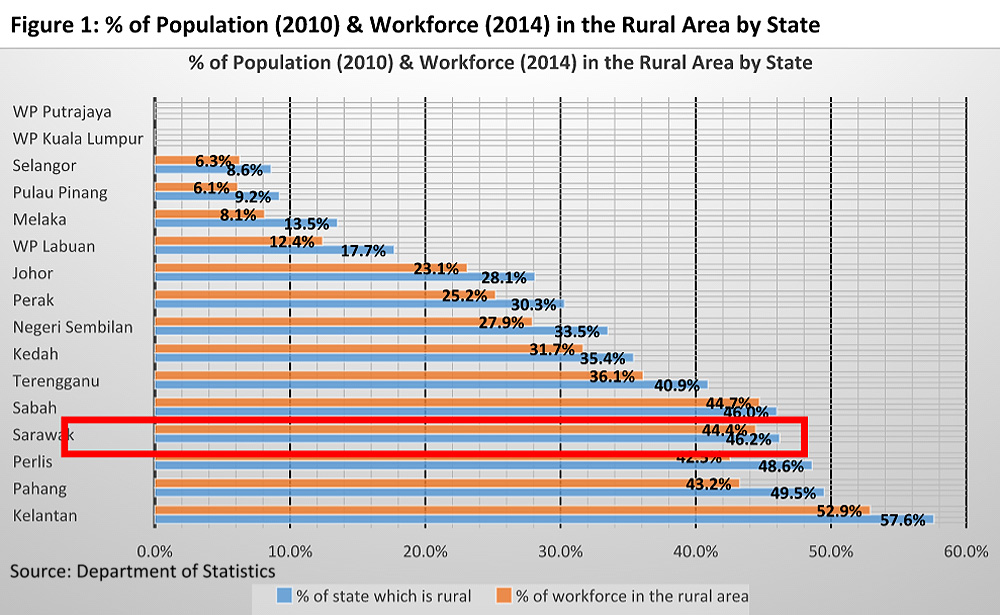COMMENT Flying into Kuching, Sarawak, one would easily think that all is well in the largest state in Malaysia. Its coffee shops are crowded, its hotels are busy and the waterfront is full of people in the evenings.
The traffic jams are manageable, at least by Klang Valley standards, its streets are quite clean and orderly and Kuching seems to offer nearly all the amenities of a big city, but at a slower and more manageable pace of life.
Sarawak’s economic indicators too seem to indicate a healthy and inclusive economy. According to the Department of Statistics, Sarawak has the third highest gross domestic product (GDP) in the country, at RM119 billion in 2014 or 10.7 percent of Malaysia’s total GDP, behind Selangor and Kuala Lumpur.
Sarawak’s GDP per capita of RM44,437 in 2014 is also the third highest in the country, ahead of even Selangor (RM40,701) and Penang (RM42,186), putting it only behind only Labuan (RM56,062) and Kuala Lumpur (RM91,097).
According to the 2014 Household and Income data, the poverty rate is Sarawak, at 0.9 percent, seems to have been almost eliminated, even though Sarawak’s Poverty Line Income (PLI), at RM990 a month, is higher than Peninsular Malaysia’s RM930 a month.
Sarawak received RM9.6 billion in approved investments in the manufacturing sector in 2014, putting it ahead of Penang (RM8.2 billion) and Selangor (RM7 billion).
Stark level of inequalities
And yet, behind these gaudy numbers is a tale not well told. A tale on the stark level of inequalities in Sarawak.
While the urban areas in Sarawak seem like any other urban area in the rest of Peninsular Malaysia in terms of development and economic outcomes, the same cannot be said of the rural areas in the state.
While we may know anecdotally that there is an urban-rural divide in Sarawak, we may not be aware of how serious this divide is and how it affects Sarawak more so than any other state in peninsular Malaysia.
In this series of articles, I want to highlight this divide, or as I call it, the tale of two nations – one nation in urban Sarawak and another very different nation in rural Sarawak. What I hope to reveal is the degree to which the impressive macro numbers hide the reality on the rural ground in the largest state of Malaysia.
This urban-rural divide is especially important in the context of Sarawak, given that 46.2 percent of the state was classified as rural in 2010 (the fourth most rural state) and 44.4 percent of its workforce is in rural areas (third highest rural workforce in Malaysia). ( See Figure 1 below )
From the distribution of economic output to the composition of the workforce, from educational outcomes to access to amenities and infrastructure, from car ownership to agriculture productivity, figures shown will reveal a rural Sarawak which looks very different from the urban areas and which will continue to face significant economic and social pressures as this divide continues to grow…

Of course, I would not want to be guilty of merely pointing out the current deficiencies without also proposing some possible solutions to these problems.
In the light of the May 7 Sarawak state election, it is paramount that we have a mature and well-informed discussion on the many challenges faced by Sarawakians, especially in the rural areas, and to evaluate proposals by the BN as well as the opposition on how these challenges can and will be addressed.
Tomorrow: Sarawak's highly unequal economic structure
DR ONG KIAN MING is the DAP Member of Parliament for Serdang. He can be reached at [email protected]

